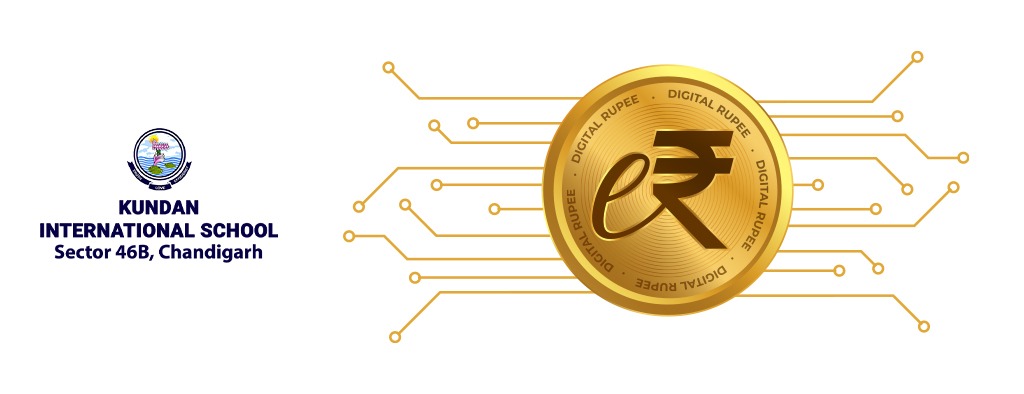In a rapidly evolving digital landscape, the Indian government has taken a significant leap towards modernisation and financial inclusion with the introduction of the e-Rupee. In this blog, Kundan International School, the Best CBSE School in Chandigarh will delve into the concept, benefits, and potential impact of the e-Rupee on the nation’s economy.
Let’s understand the e-Rupee
The e-Rupee is a digital version of the Indian Rupee, designed to operate on a block chain-based platform. Unlike crypto currencies, such as Bitcoin or Ethereum, the e-Rupee is a central bank digital currency (CBDC) issued and regulated by the Reserve Bank of India (RBI). It aims to complement traditional paper currency while offering a more efficient and transparent means of transaction.
Advantages of e-Rupee
- Financial Inclusion: The e-Rupee has the potential to bridge the gap between the banked and unbanked population. With a smartphone and internet access, even those without a bank account can participate in the digital economy.
- Reduced Transaction Costs: Traditional banking transactions often involve intermediary charges. By eliminating intermediaries, the e-Rupee enables cost-effective and faster transactions, benefitting both consumers and businesses.
- Enhanced Security: The block chain technology backing the e-Rupee ensures that each transaction is secure, tamper-proof, and transparent. This bolsters confidence in the financial system and minimises the risk of fraud and counterfeit currency circulation.
- Financial Tracking and Control: The e-Rupee facilitates easier monitoring of money flows, enabling the government and RBI to implement monetary policies more effectively and curb illicit financial activities.
Impact on the Indian Economy
- Reduction in Cash Dependency: As more individuals and businesses adopt the e-Rupee, there will be a gradual decline in cash usage, leading to a more efficient economy and increased tax compliance.
- Facilitation of Government Welfare Schemes: With the e-Rupee, government subsidies and welfare benefits can be directly transferred to beneficiaries, ensuring transparency and reducing leakages in the system.
- Global Competitiveness: As digital currencies gain prominence worldwide, India’s adoption of the e-Rupee positions it as a forward-thinking nation in the global financial landscape.
Challenges Ahead
Implementing the e-Rupee does come with its own set of challenges, such as:
- Digital Divide: Bridging the urban-rural digital divide and ensuring internet connectivity reaches remote areas will be crucial for inclusive adoption.
- Cyber Security Concerns: With any digital currency, cyber security is a critical aspect that requires constant vigilance to prevent cyber threats and hacking attempts.
Conclusion
The e-Rupee represents a significant step towards a cashless and digitally empowered society. While its successful implementation will require a collective effort from the government, financial institutions, and citizens, the potential benefits far outweigh the challenges and it will pave the way for a more inclusive and technologically advanced economy.
Ms. Shaweta Bansal
PGT commerce
Kundan International School
